Chalciporus Bataille
Three species are known in Europe. Fruitbody boletoid. Tubes yellow, yellow cinnamon or carmine. Flesh acrid or bitterish.
Chalciporus piperatus (Bull. : Fr.) Bataille
Description
Cap up to 8 cm, at first hemispherical then expanding to convex or almost flat, pale ochraceous, ochraceous, yellowish brown, sometimes with reddish tint. Stipe cylindrical or ventricose, usually tapering towards the base, ochraceous, bright yellow in the base. Flesh yellow or yellowish, bright yellow in the stipe base, unchanging when exposed to air. Tubes cinnamon to rusty, unchanging when exposed to air. Pores cinnamon to rusty, unchanging when bruised. Smell not distinctive. Taste slightly to strongly acrid. Spores 8–13 × 3.5–5 μm.
Habitat. Coniferous, mixed and broadleaf forests, under various trees but its mycorrhizal status is uncertain.
Distribution. Widespread in Europe.
Similarity. Similar and might be confused with Chalciporus hypochryseus. The later however has yellow tubes and pores.
Photographs

Typical fruitbodies of Chalciporus piperatus. Note the overall colours. (photo M. Floriani)
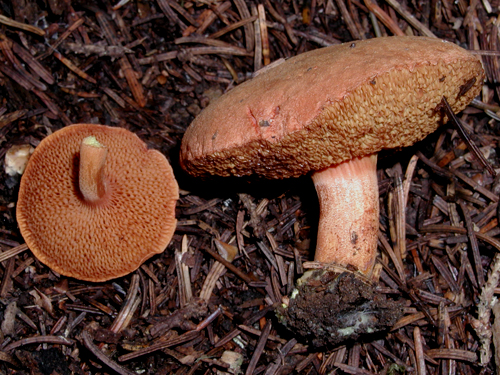
Fruitbodies of Chalciporus piperatus. (photo B. Assyov)
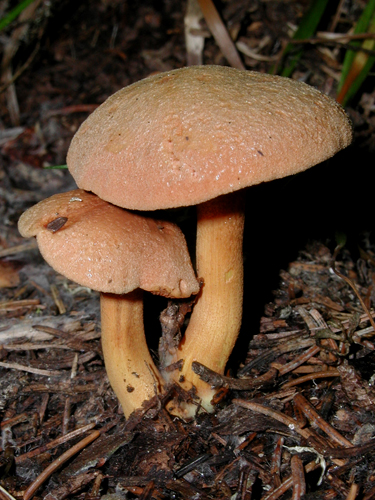
Fruitbodies of Chalciporus piperatus. (photo B. Assyov)
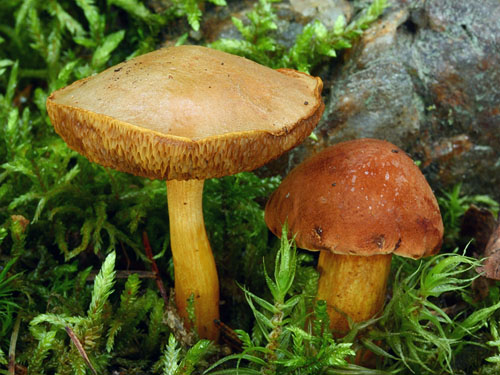
Fruitbodies of Chalciporus piperatus. (photo M. Mikšík)
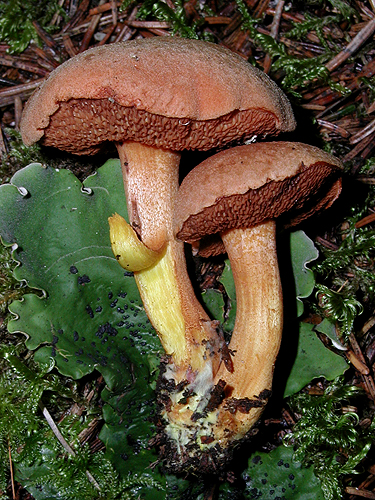
Fruitbodies of Chalciporus piperatus. Note the distinctive yellow coloured flesh. (photo B. Assyov)
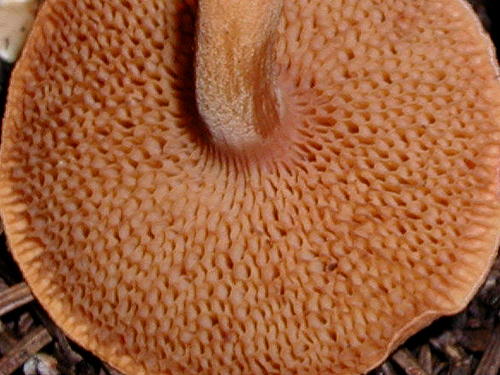
Pores of Chalciporus piperatus. Note the rusty tint. (photo B. Assyov)
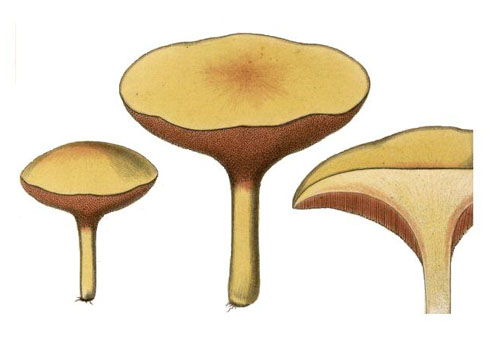
Bulliard's illustration accompanying the original description of Boletus piperatus (= Chalciporus piperatus)
Important literature
Alessio, C.L. 1985. Boletus Dill. ex L. (sensu lato). – In: Fungi Europaei. Vol. 2. Pp. 1–705. Libreria editrice Biella Giovanna, Saronno.
Estadès, A. & Lannoy, G. 2004. Les bolets européens. – Bulletin Mycologique et Botanique Dauphiné-Savoie 44(3): 3–79.
Galli, R. 1998. I Boleti. Atlante pratico-monographico per la determinazione dei boleti. Edinatura, Milano.
Lannoy, G. & Estadès, A. 2001. Les Bolets. Flore mycologique d’Europe. Documents Mycologiques Mémoire Hors série no. 6. Pp. 1–163. Association d’Écologie et de Mycologie, Lille.
Muñoz, J.A. 2005. Boletus s. l. – In: Fungi Europaei. Vol. 1. Pp. 1–951. Edizioni Candusso, Alassio.
Pilát, A. & Dermek, A. 1974. Hríbovité huby. Československé hríbovité a sliziakovité huby (Boletaceae – Gomphidiaceae). Veda, Bratislava.
Šutara, J., Mikšík, M. & Janda, V. 2009. Hřibovité houby. Čeled’ Boletaceae a rody Gyrodon, Gyroporus, Boletinus a Suillus. Academia, Praha.
Watling, R. 1970. Boletaceae, Gomphidiaceae, Paxillaceae. – In: Henderson, D.M., Orton, P.D. & Watling, R. [eds]. British fungus flora. Agarics and Boleti. Vol. 1. Royal Botanic Garden, Edinburgh.
Watling, R. & Hills, A.E. 2005. Boletes and their allies (revised and enlarged edition). – In: Henderson, D.M., Orton, P.D. & Watling, R. [eds]. British Fungus Flora. Agarics and boleti. Vol. 1. Royal Botanic Garden, Edinburgh.